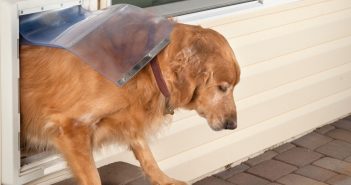Nutrition has been found to play a part in canine hip dysplasia, and what kind of symptoms are shown. While a dog can develop this condition without regard to weight or nutritional deficiencies, dogs which are obese (overweight), will show more symptoms, when added weight puts stress and strain on their own joints. In addition to this, puppies who are fed a diet that is high in protein and high in calories, to promote rapid growth, tend to show an increased risk of crippling CHD. With this accelerated growth, the puppies’ joints are prone to weakness, and will not develop as strongly as one who has been fed a diet that is healthy and well-balanced.
Exercise may also be a potential risk-factor in the development of canine hip dysplasia. Research has found that, if a dog has a genetic susceptibility to CHD, there may very well be a danger of his developing the disease, should he be over-exercised at a young age. Strangely enough, however, is that it has also been found that animals with large and well-developed muscling in the legs (particularly the hindquarters), tend to be more resistant to the chances of developing dysplasia. What this research tells us, ultimately, is that the exercise of young dogs should be limited to healthy doses, until your dog has come of age, usually by the time he’s about a year old and stopped growing. Additionally, some forms of exercise like running or swimming, are much better for your dog than rough-and-tumble play, such as jumping or wrestling. It is also a good idea to teach your dog not to jump up on people, when he is greeting them, or to jump up on the furniture; not only will it protect your pet, but it will also protect your friends and home.
A common myth is that canine hip dysplasia only affects purebred dogs; nothing can be further from the truth! Hip dysplasia can affect any dog, regardless of size, breed or age. There have been cases of it occurring in both mixed and purebred dogs and cases of it affecting all sizes of dog from the giant Irish Wolfhound, clear down to the smallest of toy breeds, such as the Yorkshire Terrier. Usually, symptoms of CHD are not noticeable until the dog reaches adulthood, but this does not mean that your puppy cannot develop it, nor does it mean that every dog with this condition will end up crippled. The only sure way of determining whether or not a dog has CHD is through x-ray; it can not be detected by a dog?s stance, his gait or by any other factor. Also remember that, just because your dog experiences stiffness in his hindquarters or walks with a limp, it does not mean that he suffers from hip dysplasia. There are many different disorders and injuries that can cause symptoms that are similar to CHD, but require different treatment.



